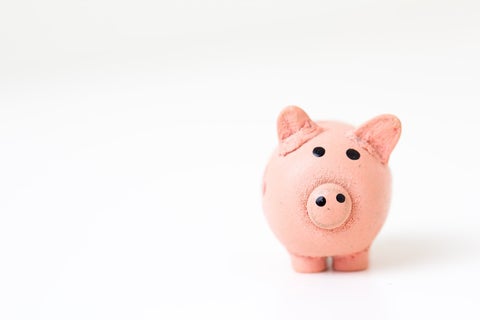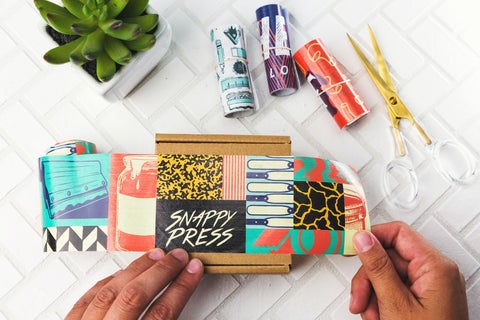How to Start a CPG with No Money
So you’ve got a great idea for a new product — one that you’re sure will be a success and fly off the shelves. But how do you get the ball rolling if you don’t have a lot of money to outlay?
It can be disheartening to realize that your dreams might be stalled by financial limitations, but that doesn’t mean they’re over! Many indie CPG brands start from nothing.
Some brands that went on to have huge success, like method and Scentsy, actually started out as teeny-tiny operations with barely any funding.

Startups reign supreme in the world of CPG brands!
Once upon a time, the food and beverage markets were dominated by big companies like Coca-Cola, Kellogg’s, and Nestle. But in the last decade, that monopoly has been completely flipped on its head.
According to Forbes, 90% of all CPG eCommerce growth is attributed to startups. Big companies are losing market share at a pretty fast rate, with more than $17 billion shifted to startups since 2013.
Sure, not every new CPG product will thrive. But with a lot of dedication and hard work, you can bring your product idea to life.
It’s all about being strategic and thinking outside the box.
Bringing your CPG idea to life on a tight budget
From initial idea to first iteration
The first step of starting a CPG is actually making the product — no surprises there! It might be something you’ve been making for a while, on a small scale, without trying to monetize it.
Say, for example, you make an amazing organic paleo granola that your friends and family all love and want to buy in bulk. How do you go from whipping it up in your kitchen to turning it into an actual, marketable product?
First off, you need to make sure that your product is something other people want to buy. Before you dive too deep into starting a company, get in touch with some potential buyers. Sticking with the granola example, maybe a local grocery store or boutique barista near your house would agree to stock your product on consignment.
Starting small is the way to go: RXBars, which was bought by Kellogg’s in 2017 for $600 million, started out by selling their products door-to-door at local gyms.
Knowing when (and how) to go pro
If all goes well, next you’re going to need to scale your production. Buying ingredients will be a big upfront cost, so are there any suppliers who will let you have long lead times on paying invoices, especially if you’ve got guarantees of buyers who will stock your products?
Before investing too much in your growth, it’s important to make sure that your product is actually filling a gap in the market. Is your product new and innovative, or is it just another version of the same product that can be bought in grocery stores across the country?
One major reason that startups and small companies are seeing more success than major CPG brands is because of the variety they’re bringing to the market. While you’re coming to stores with a brand new idea and fresh product, only one-third of launches from big CPG companies are new products. The rest are just repackaging or line extension.
A totally fresh product proposition is more likely to catch the eye of a potential customer than, say, a new flavor of Cheetos.

Minimum Viable Packaging
Next up, you need to figure out your Minimum Viable Packaging. What’s the cheapest and easiest way that you can package your product? It doesn’t have to be perfect on your first launch. In fact, it almost definitely won’t be!
Even if you’re just housing your product in reused glass bottles or simple cardboard boxes, the sooner you can get it in front of customers, the sooner you can get feedback and tailor the design.
The best way to keep costs down is to make your own labels. Sure, it’s not going to look super slick but as time goes on, and you make more money, that’s when you can invest in new packaging.
It’s all about keeping your overheads low and your eyes on the prize
The deodorant company, Native, is an excellent example of a successful startup. From day one they prioritized profitability, focusing on making as much money for the company as possible. While this isn’t the exact approach you have to take, it’s nevertheless essential to map out your brand’s path to profitability as you scale up.
Not only does this keep you on track while planning and growing, but it also gives potential buyers a very clear picture of what your model will look like down the track. It’s a lot easier to have faith in a company when they’ve done the legwork to prove themselves.
Distributing and selling your product without spending much money
Okay, great! You’ve got your product all boxed up and ready to go. So…. now what? If you want to make sales, you’re going to need to drum up some interest around your company. And thankfully, this is something that's easier than ever to do on a budget.
Technology has totally changed the game for startups across all industries, but especially in CPG. Social media allows you to drastically cut your marketing budget and directly reach potential customers in more targeted ways than ever before.
Today’s consumer is much more likely to support an indie CPG than a faceless corporation, especially if that company is transparent and honest about its business practices. Social media gives you the chance to reach out to your consumers and create meaningful relationships that will pay off in the long run.
Platforms like Facebook and Instagram are your best chances at successfully marketing your new product without having to spend heaps of cash.
Some other ideas to consider include:
Once you have your idea nutted out, your production underway, and your social media strategies all in place, then it’s all about the distribution! It’ll take a little while to get used to your new production scale, and after that it’s time to think about growing your blossoming business.
When you’re ready to think about major distribution, we’re here to help you every step of the way. Buffalo Market acts as the middle man between small, indie CPGs and large chain stores. We help business owners like you bring your food and drink to mainstream retailers and food service establishments.
Get in touch today to see how we can work together!


